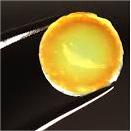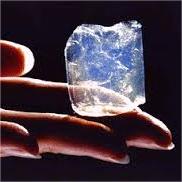Professional industry ceramic supplier, silicon nitride, silicon carbide, aluminum nitride and any other kinds of ceramics.
1. Introduction
When you hear ‘silicon carbide crucible,’ you might picture foundries melting aluminum or copper. But this advanced ceramic vessel does far more than that. Thanks to its exceptional thermal conductivity, chemical inertness, and resistance to thermal shock, the silicon carbide crucible is quietly enabling breakthroughs in some of the most demanding scientific and industrial niches—from growing ultra-pure semiconductor crystals to simulating re-entry conditions for spacecraft materials.
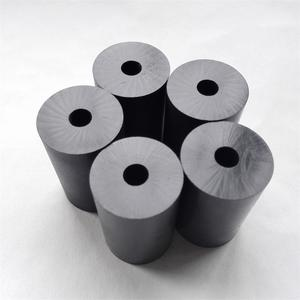
In fact, while everyday items like silicon carbide ceramic dinner plates or baking dishes grab consumer attention, it’s in controlled, high-stakes environments where this material truly shines. Let’s dive into five niche applications where silicon carbide crucibles aren’t just useful—they’re irreplaceable.
2. Semiconductor Crystal Growth: The Heart of Modern Electronics
One of the most critical yet underappreciated uses of silicon carbide crucibles is in the production of compound semiconductors like gallium arsenide (GaAs) or indium phosphide (InP). These materials require ultra-high-purity melting environments at temperatures exceeding 1,200°C.
Unlike alumina (Al2O3) or zirconia crucibles, which can leach impurities into molten semiconductor batches, silicon carbide maintains structural integrity and purity. Its low reactivity prevents contamination that could ruin entire wafer runs—something no manufacturer can afford in today’s chip-shortage climate.
Moreover, the thermal stability of silicon carbide ensures uniform heating, crucial for defect-free single-crystal growth via methods like the Bridgman technique. Here, even minor temperature fluctuations can create dislocations that degrade electronic performance.
3. Aerospace Material Testing Under Extreme Conditions
Before a new heat shield or turbine blade flies, it must survive simulated extremes. Silicon carbide crucibles play a key role in these tests by containing reactive molten metals or slags that mimic atmospheric re-entry or combustion chamber environments.
For instance, researchers testing thermal barrier coatings often use silicon carbide crucibles to hold molten calcium-magnesium-aluminosilicate (CMAS)—a substance that forms when sand hits jet engines at high speeds. The crucible’s resistance to corrosion ensures test repeatability and data accuracy.
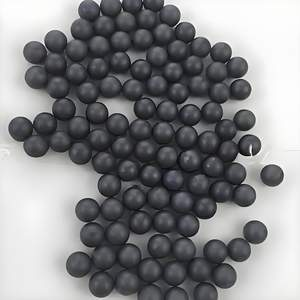
Compared to boron carbide vs silicon carbide, the latter offers better oxidation resistance above 800°C, making it safer and more durable for long-duration experiments. This reliability is why labs prefer silicon carbide over alternatives like silicon nitride crucibles for certain oxidative atmospheres.
4. Nuclear Research and Radioisotope Production
In nuclear facilities, silicon carbide crucibles are used to process and purify radioactive materials, including actinides and fission products. Their ability to withstand both high temperatures and intense radiation without degrading is unmatched.
Unlike graphite crucibles—which can react with certain metals—or alumina tubes that may crack under thermal cycling, silicon carbide provides a chemically stable, non-reactive container. This is vital when handling isotopes for medical imaging or cancer therapy, where purity directly impacts patient safety.
Additionally, porous silicon carbide ceramic tubes derived from similar manufacturing processes are used as filters in off-gas systems, showcasing how crucible-grade material informs broader nuclear component design.
5. Additive Manufacturing of Advanced Ceramics
The rise of 3D printing for ceramics has created demand for high-performance feedstock containers. Silicon carbide crucibles are now standard in binder jetting and selective laser sintering (SLS) setups that process powders like zirconia, alumina, or even silicon nitride.
During post-processing sintering, these crucibles support delicate green parts without warping or reacting. Their flat, smooth surfaces—similar in finish to silicon carbide ceramic plates for dinner—prevent adhesion and ensure dimensional accuracy.
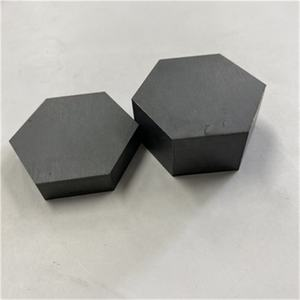
Custom shapes, such as silicon carbide ring supports or silicon carbide ceramic columns, are often machined alongside crucibles to hold complex geometries during firing. This integration streamlines production of components like custom silicon nitride heat shields or silicon nitride plates for sensors.
6. Laboratory Synthesis of Exotic Compounds
Academic and industrial labs rely on silicon carbide crucibles for synthesizing novel materials, including high-purity silicon nitride powder or boron nitride ceramics. These reactions often involve aggressive fluxes or reducing atmospheres that would destroy conventional containers.
For example, producing high purity silicon nitride powder market-grade material requires heating silicon powder in nitrogen gas at 1,400°C—a process where silicon carbide crucibles resist nitridation better than most alternatives.
Similarly, when comparing boron carbide vs silicon carbide for lab use, the latter’s ease of machining and lower cost make it preferable for one-off experiments, even if boron carbide offers higher hardness.
7. Conclusion
From powering your smartphone to protecting astronauts, the silicon carbide crucible operates behind the scenes in fields where failure is not an option. Its unique blend of thermal, mechanical, and chemical properties makes it indispensable in applications far beyond traditional metal casting.
As industries push toward higher temperatures, cleaner processes, and more exotic materials, demand for advanced ceramics like silicon carbide—and related products such as rbsic silicon carbide tile blocks, silicon carbide burner nozzles, and silicon carbide brick linings—will only grow. In the world of high-performance engineering, this unassuming black crucible remains a silent workhorse.
Our Website founded on October 17, 2012, is a high-tech enterprise committed to the research and development, production, processing, sales and technical services of ceramic relative materials such as 5. Our products includes but not limited to Boron Carbide Ceramic Products, Boron Nitride Ceramic Products, Silicon Carbide Ceramic Products, Silicon Nitride Ceramic Products, Zirconium Dioxide Ceramic Products, etc. If you are interested, please feel free to contact us.

